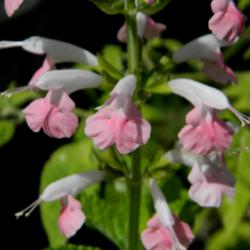You don't know where you're going unless you know where you've been. Plant tags and markers can get lost or carried away by varmints, but a garden map tucked away in your garden notebook will always be there when spring arrives. Here are some easy tips for an accurate map.
Take a walk through your garden, especially in the fall, and create a lasting guide to help ensure that perennials and self-seeders don't get mistaken for weeds in spring. Fall is a great time to do this because we often move plants around to balance out colors and heights, but that's for another article. Even if you don't move anything, fall is the last time you may see some of these plants before they die back and, in some zones, yield to snow cover. And sometimes garden mapping will give you a surprise or two.
Garden maps are best when they are simple. Just march out the door with a pencil and sheet of graph paper and make one square equal one foot. Measuring can be done in paces or get out the tape measure and measure feet or meters. Last week when I made my map, I simply paced it off. After all, it's my map and I'm the one that will be using it next spring. My paces probably will be the same size in March as in October. So, walking toe to toe along the outside edges, I paced off the approximate measurements and counted my steps. For instance, my curvy garden rectangle measured 37 by 60. I didn't go crazy trying to map the curves; just the general lay of the land is enough. Then I added in notes showing landmarks, such as "fence" and "deck," to orient things.
Then it was time to fill in circles, ovals, and x's showing the placement of plants. What works for me is to start in the back and move left to right. You might like to go front to back. The important thing is to stop frequently and check to see that you've got it right. An eraser is great. That's why pencil is important.
Now for the surprises. For one, I didn't realize that the gift envelope marked "mixed flower seeds" I had sprinkled in a hidden corner had included coral sage, a plant that's been on my want list! Sure, it's hidden away and just two bloom stalks, but besides collecting a few seeds, now I added it to the map and will check that spot next spring to see whether it overwinters. Another surprise was that the little clump of red monarda, which had struggled through its first summer with scant blooms, had sent out tons of shoots and was filling in with a dozen tiny plantlets around its base. I noted its spread on the map and put a note at the bottom to watch that it doesn't turn into a thug. You will find your own surprises.
Finally, when all plants are accounted for, it's great to number the plants on the map and add each name to a list at the bottom or on the back of the paper. If you're inspired to make plant markers in the depth of winter (oops that's another article), then you have a handy list right there.
Mapping my garden is one of my favorite fall tasks because it doesn't require cleanup or bending down. Even if you move things around again in the spring, you don't know where you're going until you know where you've been, so grab a pencil and paper and make your map!


